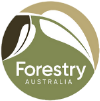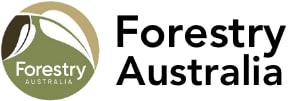
Royal Commission into National Natural Disasters 2020
OPINION PIECE
15 July 2020
Australia’s fire-prone landscape deserves better land and fire management. Just like the 242 related Inquiries and Reviews conducted in Australia before it, the current Royal Commission looking into natural disasters in Australia risks being held back by political expediency, community apathy, short memories and populist decision making.
Given the extent of the impact of the recent “Black Summer”, we now have a real opportunity as a nation to put these impediments aside and make a generational change in our wildfire response paradigm. Whatever the recommendations of the current Royal Commission are, they will presumably include the need for better land and fire management.
Managers of parks, forests and conservation reserves have long advocated for improved fire management practices, including the greater use of prescribed burning on public and private lands to make firefighting safer, easier, and more effective. If their calls had been heeded, it would have saved lives and money, not to mention reducing the loss of property, livelihood, and the impact on the fauna and environment. Wildfires involve an interaction between fuel, weather, terrain, and climate.
The state of the fuel is largely a product of land management. Fuel is also critical environmental habitat. Changing the state of fuel across the landscape, in a way that sustains biodiversity, also reduces the severity of wildfires. Achieving this requires well-trained and locally knowledgeable land managers. It is mistaken to just think of fires as threats to be fought. Wildfires are part of the natural environment and even high-intensity fires can sometimes be needed to sustain ecosystems. Currently wildfires are well over-represented across the landscape. A more balanced fire regime across the landscape can only be restored with committed and professional land management.
Effective firefighting requires the same type of skills and knowledge as is needed for year-round thoughtful, scientifically informed fire and land management. Therefore, prescribed burning across the landscape, including cultural buring, not only reduces fuel levels, it also provides important learning and experience for wildfire response into the future. The ecosystems across Australia have evolved and adapted to fire regimes over hundreds of thousands of years. Whether managing land or combatting wildfires, there can be no ‘one size fits all’ approach.
Many politicians and members of the public are attracted to the perceived “quick fix” of large airtankers and bigger firefighting forces, but experience here, and in places like Europe and North America shows that too great a focus on ‘fire suppression’, while down-playing and under-resourcing a year round approach to managing landscapes, will fail in the longer term. Aircraft are an integral part of fire suppression operations, for detection, mapping and providing strategic support to ground crews. Aircraft are most effective on small fires during initial attack and controlling spotfires but must be followed up by ground crews to ensure all combustion is suppressed.
Aircraft effectiveness is greatly improved on fires where the intensity of the fire has been reduced by prescribed burning to reduce fuel loads. Aircraft are quite ineffective when used in isolation on intense fires. It is ultimately the on-ground firefighting resources that eventually control wildfires. Both ecosystem maintenance and the related fire management need a range of inputs. These include a good scientific and technical underpinning, specific knowledge of local landscapes, adequate long-term resourcing (financial and human), and most certainly research and technical innovation.
Spending hundreds of millions of dollars on firebombers would better be spent in employing fire and land managers throughout the year so that a skilled, knowledgeable and experienced workforce is available to not only conduct prescribed burns, but to also control wildfires. From the evidence, it is clear we need to rethink how we manage fire in Australia’s landscape. For much of a given year, our forest and woodlands are far from the day to day concern of most Australians.
But if that ‘distance’ leads to the inadequate resourcing and improper scientific underpinning of the care of our fire-prone lands, then not only will the country’s unique ecosystems suffer, but so too will our water catchments, our air quality and ultimately human life and property. We already have a nationally agreed “road map” for socially, environmentally and economically sustainable fire management, signed off by COAG members in 2014.
This National Bushfire Management Policy Statement for Forests and Rangelands needs resources and a commitment to implement it. The Institute of Foresters of Australia believes that we need professionally trained and experienced fire and land managers to be successful. This will require a change in university courses and a change in recruitment and advancement processes in land management agencies. It is to be hoped that Inquiry-243 does not suffer the fate of too many of its predecessors, a report ending-up on the shelf, until our next ‘Black Summer’ occurs. If we want a different outcome, we need to change land and fire management.
Bob Gordon
IFA/AFG President

